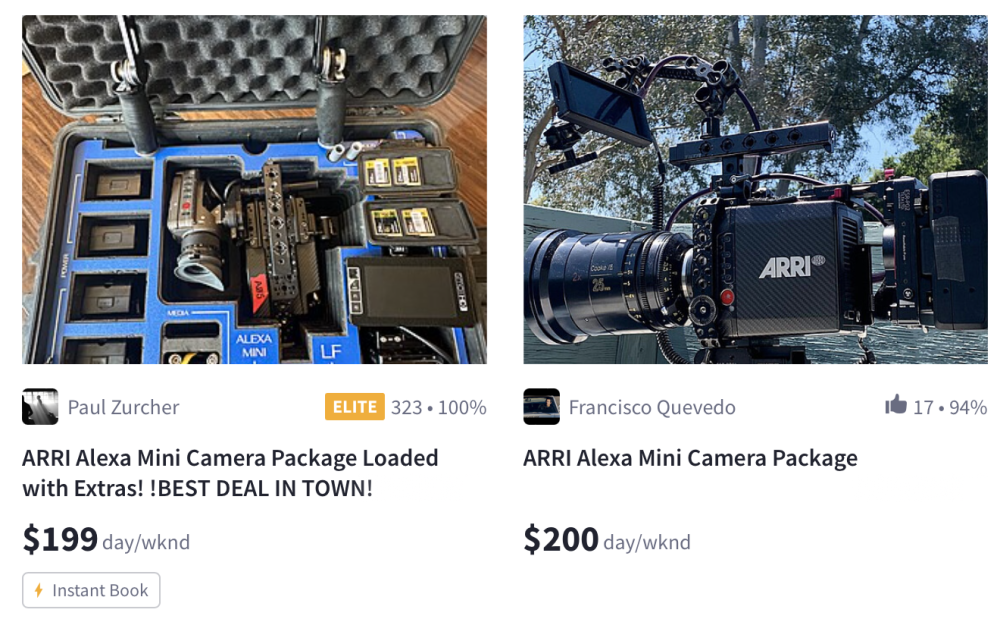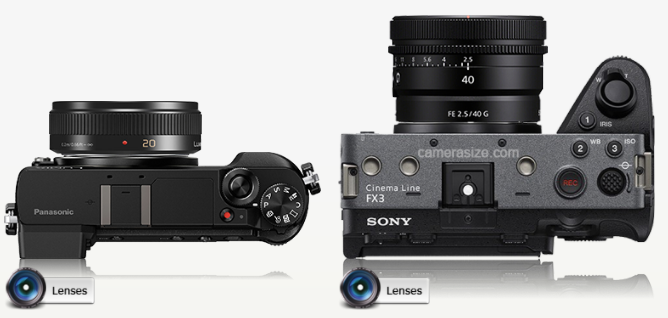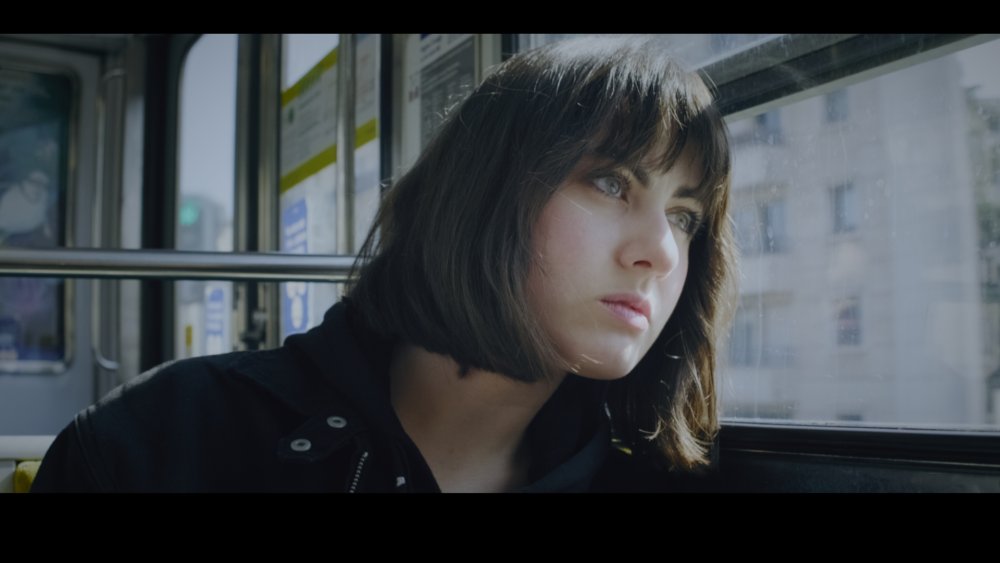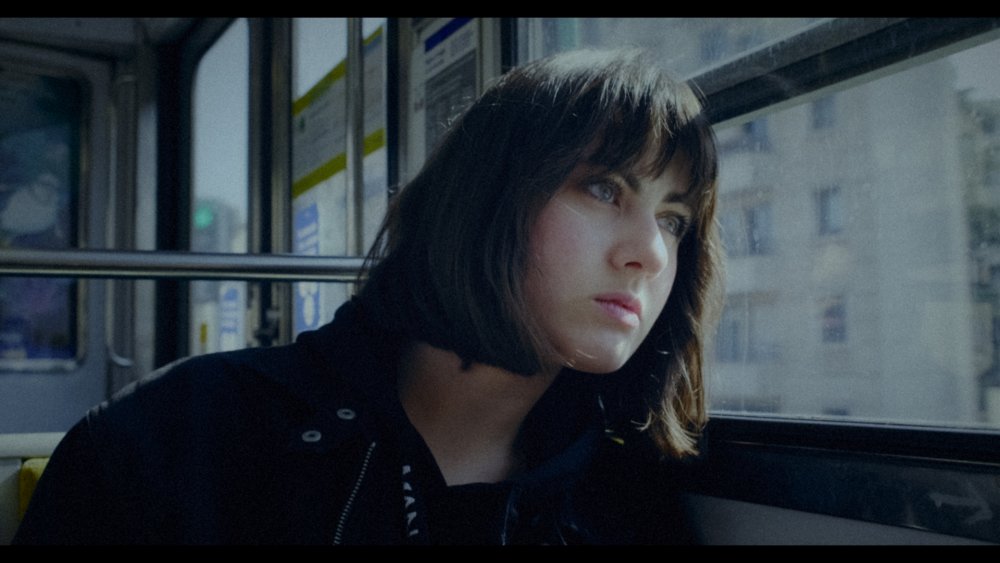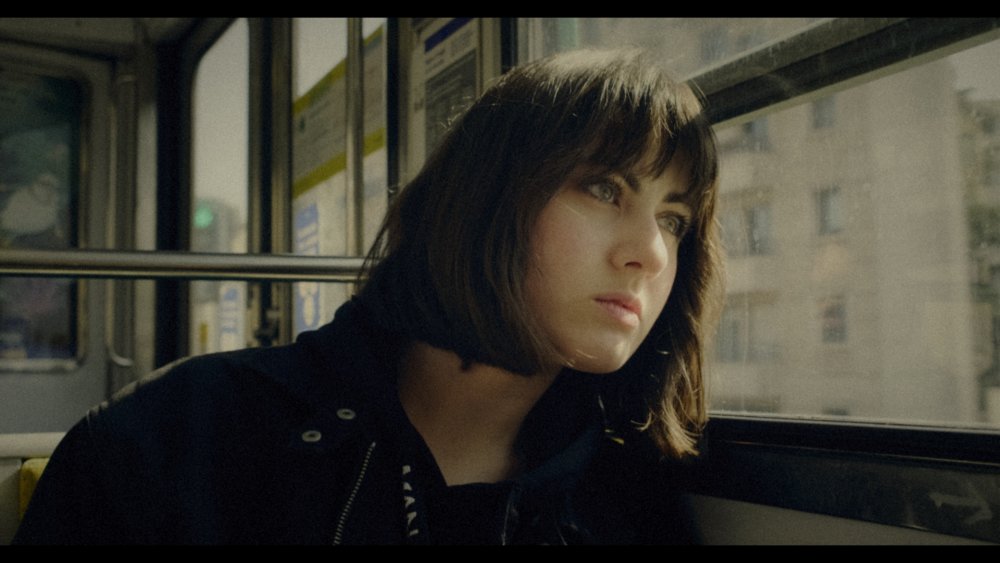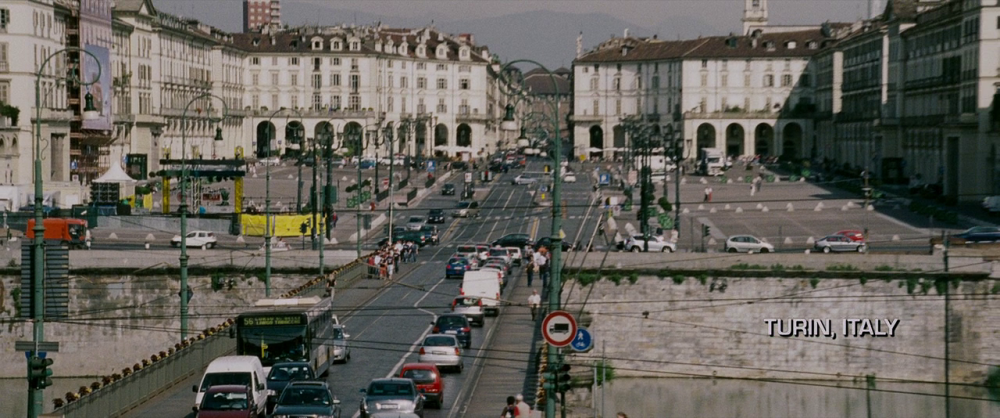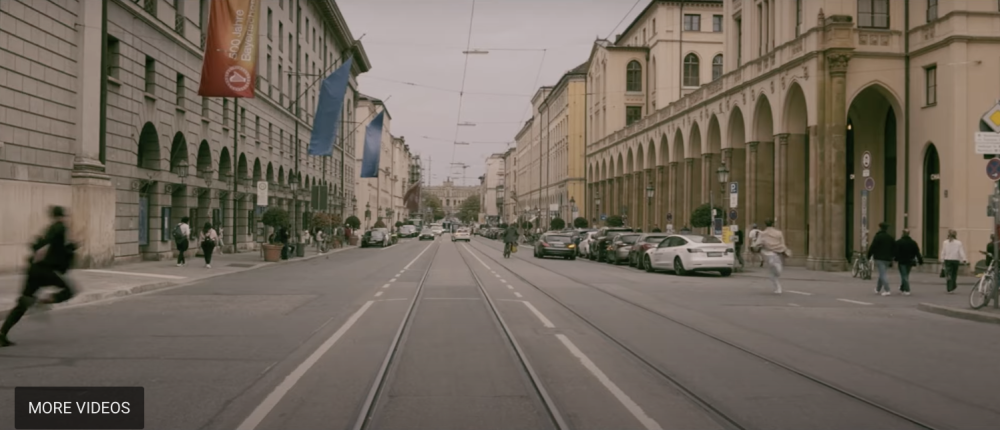-
Posts
7,985 -
Joined
-
Last visited
Content Type
Profiles
Forums
Articles
Everything posted by kye
-
Of course, there is a third option beyond smartphone and normal camera. That option would be to leverage its existing tech but compromise on the thickness of the device, and include multiple cameras with various different focal lengths, light the Light L16 did. (The L16 tried to stitch the camera images together, which didn't work well, and isn't what I'd recommend. But it did show that you can get 16 smartphone sized camera modules into something very compact, with potentially spectacular dust and water-proofing.) As we saw from the Venice video I posted yesterday, the main camera is broadly a good option but the other cameras tend to suffer significantly from lack of light. If they had extra thickness they could use the same size of sensor for all the cameras, and combine it with faster lenses. There are F1.4 smartphones out there, but we all know that lenses can be built much faster than that. Imagine a device that's sized like a large smartphone but with the thickness of a modern camera body without the lens, and has an array of cameras including 16mm FOV, 24mm FOV, 50mm FOV, 100mm FOV, and 250mm FOV, all capable of 8K60, and all at F0.8. Shooting all resolutions and flavours of Prores in Apple Log of course. If Apple made a dedicated camera, it would have to be completely superior to their flagship phones, and would also have to appeal to the masses who want improved imaging and are willing to pay for it, BUT would have to fit the Apple philosophy of being elegant and simple to use. I don't think an FX3-ish or Alexa-ish device with Apple written on the front would do that.
-
A proper LOG implementation would be even better. That way it could be graded properly using colour management. Now that Apple have shown what is possible with Apple Log, there's no denying that it's possible.
-
Ah, that makes sense. Considering the tens of thousands of complains that we have against all cameras ever released, it makes sense not to put the camera anywhere near the image!
-
Not so good for filming in uncontrolled lighting then. Unfortunately, that's basically ALL that the iPhone gets used for!
-
Moire can be caused at many points in the process. You are talking about moire being caused by the camera not downscaling the image from the entire sensor, which is what is happening in the 1080p example of the A6600. This happens. What also happens, and what I have been trying to explain, is that it can also occur as a function of the native sensor resolution and the real world, which means that the patterns of light that the sensor detects will have moire in them, and it won't matter what happens after that - no amount of good processing can fix it. The cure for this is some kind of optical mechanism to spread the light between the photosites. This could be an OLPF, clever design of the micro-lenses, combination of these, or other things as well. This is why people keep talking about AI - it's the only way that moire could be fixed after being captured.
-
Like every production with a real budget ever. Alexa Mini camera packages are around from $200 a day... on any set whatsoever that's less significant than the catering budget, the fuel budget, etc and absolutely dwarfed by even the vehicle rental budget. It's why there's precious little great-looking footage from all these mirrorless cameras - if you were going to go all the trouble of making a real film then why would you skimp on a camera package? It makes no sense. My sister and I shot a short film in the late 90s when she was in film school, it was self-funded for $2000. We borrowed everything and our largest cost was catering (feed people well and they'll be happy). It was a 5 minute final film, we had 20 people on set, and my estimate was that in total it had thousands of person-hours put into it, including pre and post. Even if everyone gets paid minimum wage, the camera rental cost is inconsequential.
-
In those modes the sensors resolution is higher and the chart doesn't have fine enough lines to create moire. It does indicate that the Sony isn't using the full sensor resolution in its 1080p mode though. This isn't a surprise, the GH5 employs full readouts and high quality image scaling internally, whereas inferior cameras don't.
-
Addendum to the above. I think the shots that suffer the most are the ones with the non-main cameras. I know on my iPhone 12 Mini that the main camera has the noise performance of the GH5 in identical conditions with an F2.8 lens on it, but the wide camera on the iPhone has the same noise as the GH5 in the same conditions but at F8... that's 3 stops worse performance.
-
This seems like a very useful video.. obviously shot in the real world, in 4K60 Apple LOG with an ND and the BM Camera App which offers the manual controls. Some shots are very clean and with nice colours, others seem a little off, some shots are noisy even though there should be lots of light, etc.. Lots of shots look like a smartphone, unsurprisingly. My take-away is that Apple LOG is great and the results look stunning, but it's very fragile and everything in the situation has to be favourable otherwise it starts looking bad quite quickly.
-
The 6600 does not have an OLPF, and the moire is present the moment the light is collected on the sensor. Once that happens there's nothing you can really do to get rid of it.
-
Size will be the problem... These are both 40mm FOVs. Sure, the MFT is 20mm F1.7, which is about one stop deeper DoF but that's the slowest 40mm prime Sony make. I actually don't care about the sensor size anymore, the FX3 is quite a small camera, the issue is that the lenses just aren't. It might be big enough, assuming you can position it as anything other than a FF camera with a lens glued on the front that you can't change. It has to be seen as a creative limitation, as something MORE elegant and creative, rather than just limiting. I've seen people talk about cameras like the Leicas like that, and the Ricoh ones too, but I'm not sure that companies like Sony could pull off that kind of perception shift.
-
-
-
Cool image, it grades really nicely. I went... a bit further with it. I decided to give it a more retro film blockbuster look.
-
Yeah, I don't need the flash, but without an audio input I also don't have a use for the hotshoe. Of course, if they made a compact shotgun mic that used the hotshoe that would be spectacular! The current sensor/processor can do 4K24/30 100Mbps and 1080p30/60 (20Mbps/28Mbps). If they went with a newer sensor/processor then I can imagine it would be possible to support at least 4K24/30 and 1080p24/30/48/60 at a range of bitrates. I'd like to see 4K at 200Mbps and 1080p at 50/100Mbps. Currently if you record 60p at 28Mbps and conform it to 24p it's only 11.2Mbps - good luck suggesting that's adequate for anything in todays world. 48p is a mode that is very premium and only available on the highest-end cameras, which is sad. Being able to shoot 48p with 360 degree shutter gives a super-smooth-looking 360-shutter 50% slow-motion footage, or completely standard 180-shutter 24p normal speed footage, and you get to decide which in post, rather than when you hit record. Tor the target market the ergonomics are spectacular. Here's a comparison: Smartphone - open camera app, hit record. Point-and-shoot: Did I leave it in the car? Why is the battery flat? Honey, I thought you charged it last time? I thought you were bringing it. You said you had it. You ALWAYS do this..... Wasn't that the fixed-lens compact camera market? That was my recollection. Maybe I'm mis-remembering it though. Let's hope not!!
-
I don't know - there's loads of standards that are supported and everyone opts into. It doesn't even have to be everyone using the same standard - we don't have one LOG standard that everyone shares, but they've all specified the technical data to be able to transform each LOG into each other. If we get tools that can read each manufacturers different gyro data standards then that will do nicely and who cares as long as we can utilise things in post.
-
It was graded like a feature film, that's why it's so dark. Here's a still from the video: Here's a still from one of the Bourne movies, shot on film: The iPhone one is a little darker in the highlights, but it's also overcast, whereas the Bourne image is in full sun on white buildings, so that makes sense. The iPhone one has a little less contrast too, which is partly appropriate due to the weather, but also likely to simply be that in modern times people seem to be afraid of contrast. People all over the internet are using the phrase "cinematic" willy-nilly but seem to have lost contact with reality in terms of what movies actually look like - most "cinematic" content looks more like video than a dad with a handcam. It seems to still have a video look - it's something about the motion that I can't put my finger on. I've been sensing this for almost a year now with various footage from a range of different cameras, but haven't worked out what it is. I might have to step things up and actively start chasing it.
-
I have a strange relationship with the GX85, now that I've gotten sufficiently good at colour grading - I don't feel limited by it. Of course, if they were to increase the DR, improve low-light performance, add 10-bit, etc etc, then I'd be happy, but I'm not chafing at the bit for those things. What I wouldn't mind though, is having a log profile. And not a "V-Log L" style unsupported thing, I mean a real log profile that's supported with professional specifications. Apple did it with a phone, so there's no excuses now. They might need to add 10-bit for that, but so be it. There is quite a bit of info about Panasonics future plans. For example, this says that Panasonic has registered two new cameras, likely on higher end and one lower end: https://www.43rumors.com/panasonic-officially-registered-another-new-model-in-china-we-now-have-two-cameras-coming-soon/ This article from France suggests that they're selling well there, that although the compact camera market was crushed by covid, their sales are increasing due to competitors leaving the market segment, and that expert users prefer compact cameras with interchangeable lenses instead of expert compacts: https://phototrend-fr.translate.goog/2023/10/interview-panasonic-salon-de-la-photo-2023/?_x_tr_sl=auto&_x_tr_tl=en&_x_tr_hl=en&_x_tr_pto=wapp That's all hedging-our-bets marketing-speak of course, but it sounds to me like Panasonic might be keeping its eye on the compact market segment with the view to having a large share of a relatively small market. We all know that smartphones ate the point-and-shoot fixed lens market, but interchangeable lens cameras will always have a huge advantage over smartphones in this regard, so I think there will always be demand of some sort. The Resolve v18.1 manual is 4036 pages. They're up to 18.6 so I'd say that one is longer still.
-
If it's got a variable focus lens then it will need to focus just like any other camera. I was just making the point that a 7.4mm F2.8 lens doesn't have a narrow DoF - it's got barely shallower DoF than a smartphone.
-
Oh yeah, that would be perfect! I didn't know it took RS into account, that's cool. It makes sense because the data is all there. Hopefully we're heading towards a common gyro data standard, or at least a set of standards, that can be used for things like this. I'd happily shoot without an ND, then apply stabilisation and blur based on gyro data, then apply any lens simulations, then colour grade on top of that!
-
I contemplated the idea of carrying something around to build my strength, but in the end didn't / couldn't be bothered / decided to lighten the rig. Some things are a matter the strength of muscles, which grow quite quickly if you do strength building exercises, but other things are about the tendons and other stuff, which grow incredibly slowly. For me, carrying a heavy camera around ended up hurting my wrist, so I figured it was tendons / ligaments / etc which all take time to grow.
-
I don't see your problem, just build strength by carrying around a brick all day when you're at home or running errands. It's a standard industry strength training practice. This photo shows a steadicam operator popping down to the shops on his day off:
-
I started with the situations I find myself in, what I have done in those situations that worked and what didn't, what I like the look of and what I don't care about, and then tried to work backwards from there. That thinking lead to a number of realisations that helped me focus, for example: I see compositions in all sorts of focal lengths My home videos are only when we go somewhere interesting, so are about the people interacting with the environment (so are environmental portraits) and this means I want to keep the background relatively in focus most of the time During the day I will see compositions of far-away objects but at night you don't normally look at far away things, but if you do then you normally have time to change lenses (e.g. if you're at a lookout) Painting is about adding things into your composition but photography / videography is about removing things, so in cities I tend to use longer focal lengths more than I would when I'm in nature How big the camera is has a big difference on how I feel when shooting, and that influences when I shoot, how I shoot and how people act in the footage, so this is more important than FOV in those situations etc. Obviously yours will be different, but it's the thinking-it-through that I think provides the insight. A fun thought experiment is to start with nothing and then only add things into your setup when you can justify needing them. Then when you identify a need not met by the current hypothetical kit you add something that only satisfies that requirement and not more. This way you are sure to not over-spec. Mine is similar too. I worked that out when I had the Canon 700D and Sigma 18-35mm F1.8 which were 1.4kg and were definitely too heavy and by a good margin. I later had the GH5 + Voigt 17.5mm + Rode VMP+ which was 1.3kg and was a challenge, and XC10 + Rode VMP+ which was 1.1kg and manageable but at the upper limit for carrying it around and having it constantly in the hand and ready (e.g. at the zoo for a few hours, or at a festival, etc).
-
I just saw this video where Waqas demos the OFX version of the Motion Blur effect, and it does a seriously good job - I've linked to the final result: He's also applied a blur to counteract the ridiculous sharpening (what a great idea!), corrected for the lens distortion, and added a subtle grade. I have no idea if the OFX version of this has recently gotten better or if it's just been there all along, but it's waaaaaay better than the tool in the UI, which is what I tried previously. I haven't played with it yet, so this might be a cherry-picked example where it worked ok, but it's interesting and worth playing with, especially on clips with more subtle movement.
-
Easy! It's that black thing with some white writing on it.... duh!




